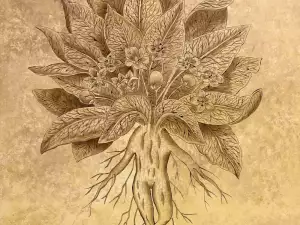Arabic magic features three types: onomatomancy - interpretation of the letters, words and names of the Quran; rhapsodomancy - interpret the meaning of the text itself; Tamim - using suras of the Koran as a talisman .
In the first two cases, the task of magical procedure is the interpretation of meanings that can serve as a portent for people.
Talismans work by themselves, regardless of skill for reading that the people bearing the text have. The person performing magic acts must be in a state of ritual purity.
The most appropriate days of the week to perform magical rituals are considered Fridays. Magical actions require iterations between three and seven times.
When performing magical acts ayahs and verses are read aloud by the reader, who must be turned to face Mecca, and what is being read, must be written down by someone as it happens.
For this purpose a variety of materials were used in ancient times: paper, silk, cloth, silver, gold, camel bones, horse skin and even parts of a burial shroud. Instead of ink were used musk, saffron, rose water, as well as apple or grape juice.
To understand what weighs on the heart of his wife, a man must write on his right hand with snake blood verse 41 of Sura 4 on Monday night and then put that hand on the chest of the sleeping woman. She will then begin to share everything and there will be no secrets from him.
There are huge numbers of suras and separate ayahs which are used to prevent nightmares, illness and injury, for attracting love and treasures. Often these suras were recorded on magic squares with magic numbers.
There are specific divinatory tables in which words, letters and numbers are organized and their combinations make sense.
The simplest divination is done with text from the Quran. Choose a Sura and verse or page and paragraph, open the book - and behold, this is the answer to your questions.









